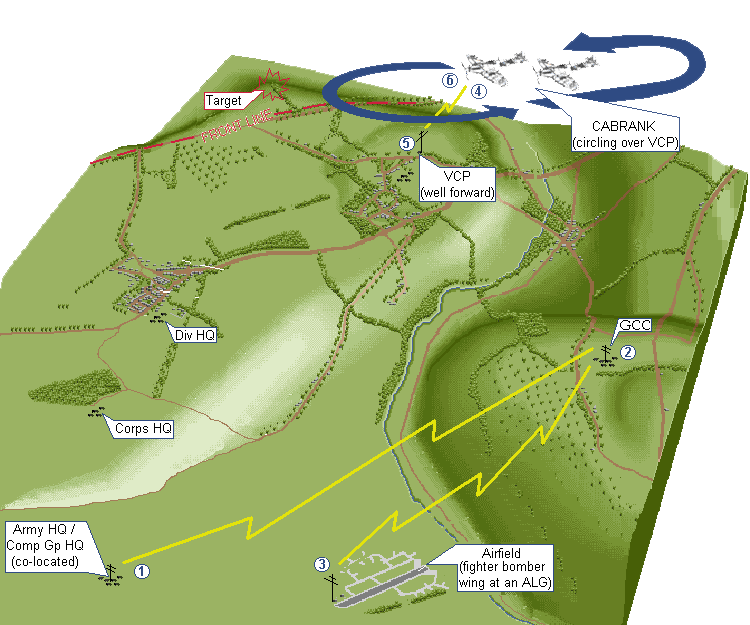

|
Dedication Overview Chapter One: Background Chapter Two: System Chapter Three: Problems Chapter Four: Practice Chapter Five: Assessment Conclusion About me |
CABRANK system of Impromptu Air SupportBritish/Commonwealth air strike procedure for impromptu air strikes with a CABRANK. 
1. A decision is made at the Joint Group/Army headquarters to lay on a CABRANK. Because it consumed a great deal of air resources, this would only be done for critical occasions, such as the spear-head of a major advance. 2. The GCC orders the assignment of the actual aircraft. 3. A fighter-bomber wing prepares the aircraft for CABRANK duty. They are briefed on the known situation in the assigned CABRANK area, and given an alternate target to strike if they expend their time in CABRANK without having been called upon for an impromptu air strike. 4. Upon arrival to take up CABRANK, the aircraft check in by radio with the VCP. 5. When a target appears, the VCP calls on the CABRANK to strike it.
6. The CABRANK, in direct radio communication with the VCP, can wheel down and strike the target. If an FCP were present rather than a VCP, the system worked more-or-less the same, except that FCPs were located with corps headquarters rather than farther forward. It should be noted that in practice it was found that due to the close terrain in Normandy, in most cases VCPs could not visually observe targets, thus worked more like "mini-FCPs" at brigade level than true VCPs. |